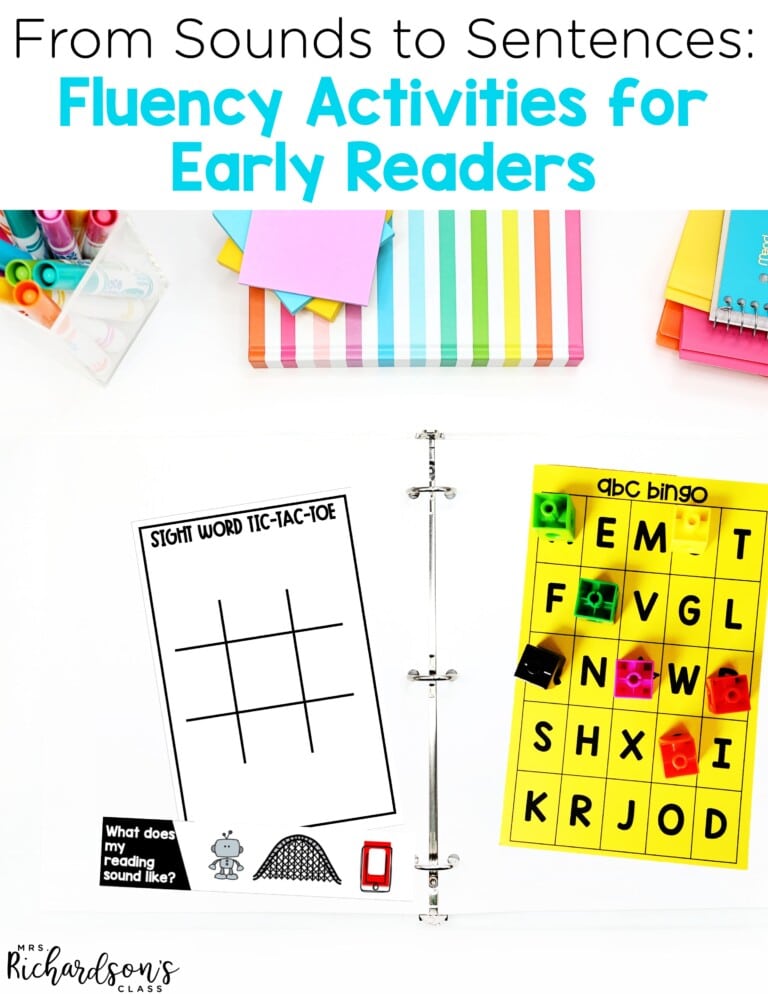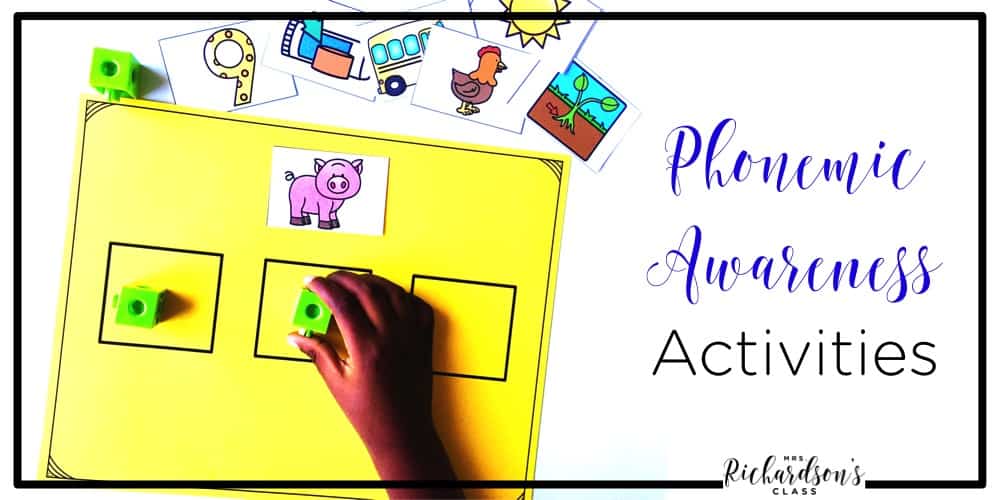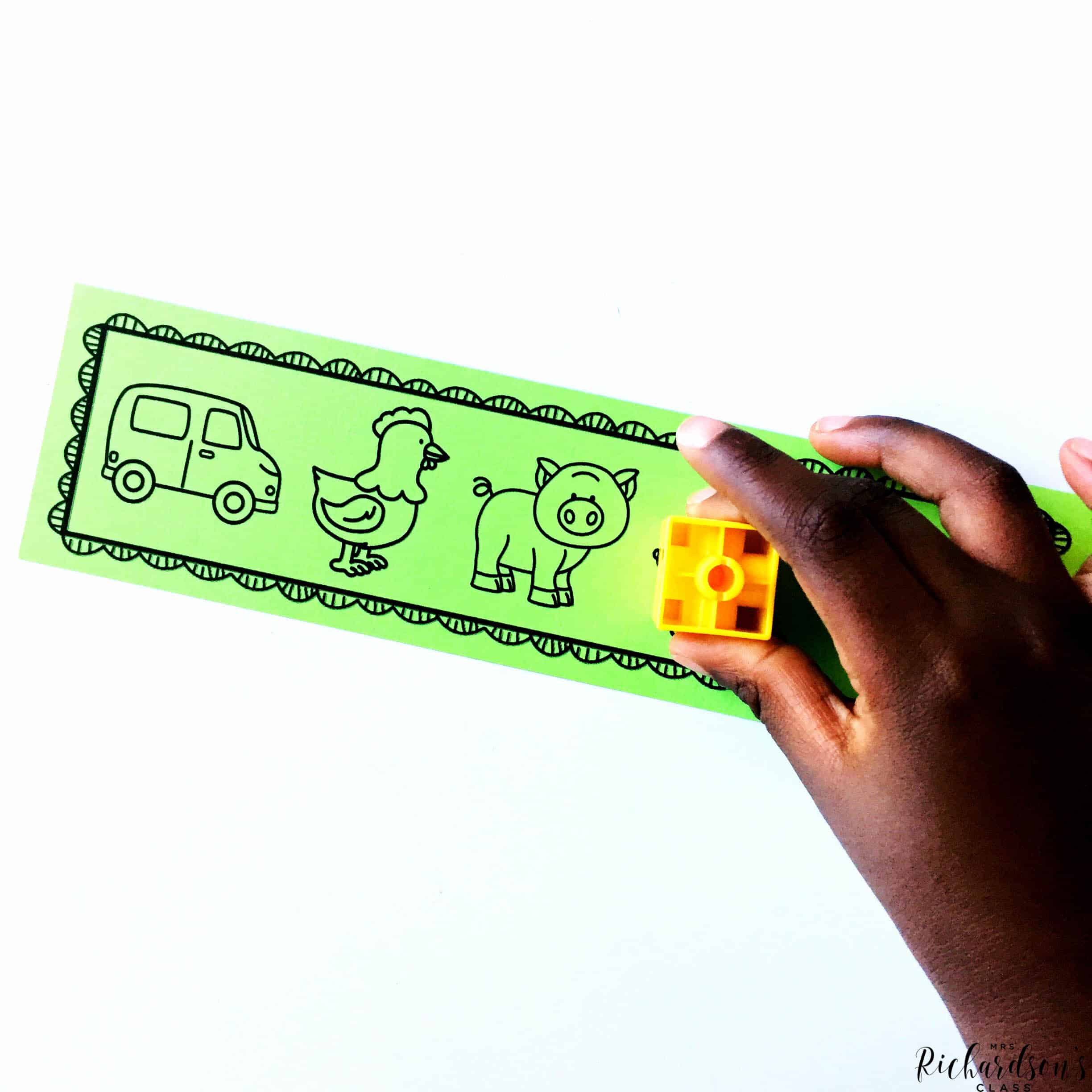


Mastering phonemic awareness is a key factor in reading readiness for little learners. No matter what reading level a child is on – pre-readers to high readers, they ALL have or need a strong foundation of phonemic awareness. Sometimes we just don’t know where to begin to help our students build the foundation of reading and other times we are simply overwhelmed by the task of “teaching them to read”. Simply put, teaching children to learn to read begins in two places – with developing concepts about print and with building phonemic awareness.

Phonemic awareness is the ability to hear and manipulate phonemes. Phonemic awareness does NOT include letter identification or matching letters to their sounds. It focuses ONLY on the phonemes. There are 9 main areas of focus.
Simply stated, phonemic awareness is the foundation of teaching a child to read. Their reading readiness is built by doing phonemic awareness activities and working on concepts about print. It’s really easy to jump right into practicing letter identification and letter sounds, but doing phonemic awareness activities helps build a strong foundation for our little readers.
Phonemic awareness activities are great for one-on-one interventions, small groups, and even whole group. I love using fun songs as we have a few minutes to kill in our schedule. Another simple thing that was great for whole group instruction was anything they could do on a little work mat. Here is an activity where the focus was medial sounds. I would say a word and they would have to cover up the picture that had a matching medial sound. 
Grab these FREE HERE.
When it comes to helping my struggling readers, specifically in kindergarten and first grade, many times it all comes back to the basics–phonemic awareness. Managing RTI can be overwhelming, but having a system in place to follow was a big help! You can read more about that HERE in this blog post.
The task of tracking all of the data, keeping students motivated, and coming up with intervention activities can be overwhelming! I know I was overwhelmed, at least! Here is the system I use to help me keep it all together.
I knew I needed everything in one place! I didn’t have time to be grabbing one thing from here and another thing from there. I wanted everything together. The great thing about phonemic awareness activities is that you don’t always need many different kinds of manipulatives. I put everything in a binder and divided it into 9 sections.
Each section has a cover page, 3 activities prepared (if there was anything to prepare), the assessment, and intervention recording page.
For the puzzle activities, I found these plastic velcro envelopes at Staples for only $0.99! They fit in my binder, too!
If you are interested in these activities for your students as they are learning to read or for intervention time with your little readers, you can get them HERE in my store.
What are your favorite phonemic awareness activities? How often do you practice these skills in your classroom? What do you find works best for you? I’d love to hear what works for you!
pin it

Want to use the latest research to boost your readers during small groups? This FREE guide is packed with engaging ideas to help them grow!

I’m a K-1 teacher who is passionate about making lessons your students love and that are easy to implement for teachers. Helping teachers like you navigate their way through their literacy block brings me great joy. I am a lifelong learner who loves staying on top of current literacy learning and practices. Here, you’ll find the tools you need to move your K-2 students forward!


| Cookie | Duration | Description |
|---|---|---|
| cookielawinfo-checkbox-analytics | 11 months | This cookie is set by GDPR Cookie Consent plugin. The cookie is used to store the user consent for the cookies in the category "Analytics". |
| cookielawinfo-checkbox-functional | 11 months | The cookie is set by GDPR cookie consent to record the user consent for the cookies in the category "Functional". |
| cookielawinfo-checkbox-necessary | 11 months | This cookie is set by GDPR Cookie Consent plugin. The cookies is used to store the user consent for the cookies in the category "Necessary". |
| cookielawinfo-checkbox-others | 11 months | This cookie is set by GDPR Cookie Consent plugin. The cookie is used to store the user consent for the cookies in the category "Other. |
| cookielawinfo-checkbox-performance | 11 months | This cookie is set by GDPR Cookie Consent plugin. The cookie is used to store the user consent for the cookies in the category "Performance". |
| viewed_cookie_policy | 11 months | The cookie is set by the GDPR Cookie Consent plugin and is used to store whether or not user has consented to the use of cookies. It does not store any personal data. |
14 Responses
Thank you so much for sharing!!! I too struggle to get a system going for my little ones! I need all the help that I can get!
I am happy to share and help any time, Denise!! I’m so glad you found this helpful! 🙂
Hello!
Thank you for your truly informative blog! I have a question about the section titled What is Phonemic Awareness? –
shouldn’t the second sentence read – “…does NOT include…?”
Yes!! It absolutely should say that! I am so glad you caught that!! Thank you for letting me know!
I teach at a small private school. The only assessment for reading levels that we have is Accalerated reader. How do your guiding reading levels compare with AR?
Thanks
Hi Elizabeth! My units align more with Fountas and Pinnell’s levels. You can use this conversion chart I found here to help you find what AR level each of my reading levels are. 🙂 Let me know if you have any other questions! https://www.gaston.k12.nc.us/cms/lib/NC01911153/Centricity/Domain/64/ReadingLevelChart.pdf
We love your Phonemic Awareness RTI activities and assessments. What else do you have that goes along with this? When will you come out with Phonics activities and assessments?
Hi Pam! I’m so happy to hear that you love the activities!! I do not currently have plans for a phonics version, but I will keep that in mind! 🙂
Hello,
Thank you for your blog. I also like your Facebook vlogs. Will you be doing more of these? Where can I find the ones you have already done?
Question. I am first grade and I had a student read a book for me as a cold read. When they read, they are not monitoring for meaning or visually. How do I teach to be a more careful reader? They made many mistakes on a book that I thought they should be able to read, but because of their mistakes, it was a frustrational read. One mistake that I am recalling was the word seemed. They read smiled.
Thanks for your help!!
Hi,
I just find your website is AMAZING!. I really appreciate if you could tell me the name of the blocks that you use in the elkonin boxes or where i can get that type of blocks.
Thank you so much
Hi Cloe! They are snap cubes. Here is my affiliate link to some on Amazon. https://amzn.to/36HXZCO Really, though, anything will do–coins, blocks, beans, colored discs, etc. So glad you found my little piece of the internet!